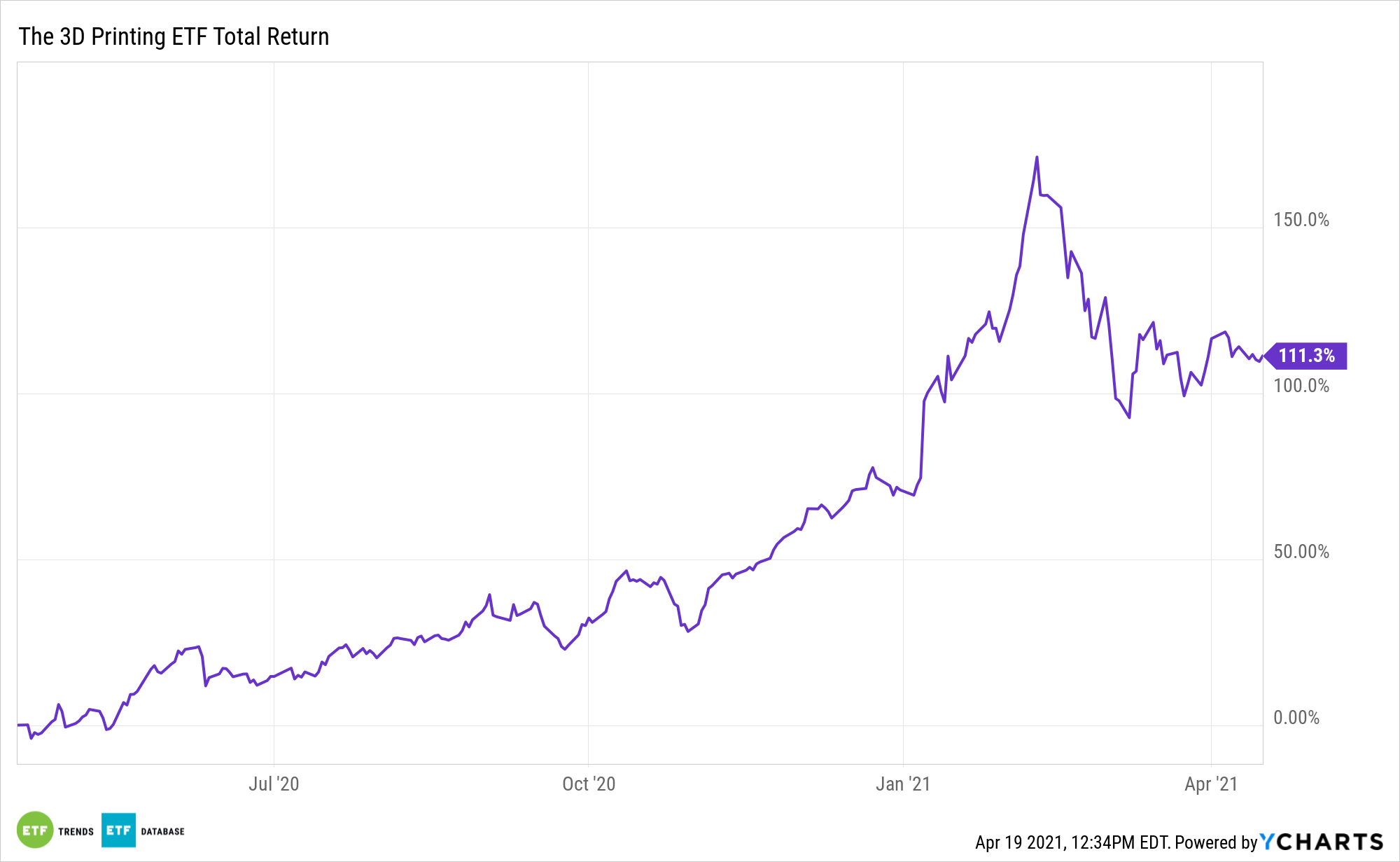One of the primary sources of allure with the ARK 3D Printing ETF (CBOE: PRNT) is the myriad applications of 3D printing itself.
PRNT is the first U.S.-listed ETF dedicated to the 3D printing theme. The fund is one of two passively managed products from New York-based Ark Investment Management. ARK believes 3D printing will revolutionize manufacturing by collapsing the time between design and production, reducing costs, and enabling greater design complexity, accuracy, and customization than traditional manufacturing.
Count industrial ceramics among the markets where 3D printing is slated to experience exponential growth in the years ahead.
“The 3D Printing Ceramics Market is projected to grow from USD 116 million in 2020 to USD 384 million by 2025. The aerospace & defense segment accounted for a share of 39.7% in terms of value in the 3D printing ceramics market in 2020 and is projected to reach USD 172 million by 2025 at a CAGR of 30.2,” according to MarketsandMarkets research.

PRNT: Multiple Power Sources
Bolstering the case for PRNT is that plenty of major economies outside the U.S. are embracing 3D printing. The same goes for industrial adoption, which is increasing in broad-based fashion.
“Oxide-based ceramics dominate the market in terms of value, with a share of 60.0%. This is due to the fact that these ceramics have wide applications in the aerospace & defense, healthcare, electronics, and consumer goods industries, among others,” notes MarketsandMarkets. “Oxide-based ceramics are economical and hence, are widely used for prototyping and by hobbyists for personal use as well. It is because of the same reason that oxide-based ceramics have 69.0% market share in terms of volume.”
See also: Could You 3D Print a House? It’s Already Been Done
Passively managed PRNT offers leverage to its namesake as its benchmark “is composed of equity securities and depositary receipts of exchange-listed companies from the U.S., non-U.S. developed markets and Taiwan that are engaged in 3D printing-related businesses within the following business lines: (i) 3D printing hardware, (ii) computer-aided design (‘CAD’) and 3D printing simulation software, (iii) 3D printing centers, (iv) scanning and measurement, and (v) 3D printing materials,” according to Ark Investment Management.
“Industries have adopted 3D printing for part production i.e. a small component of a bigger assembly,” concludes MarketsandMarkets. “This has opened new frontiers in the 3D printing landscape, with companies developing their printing capabilities in terms of speed, material utilization, and printing. Commercial manufacturing of 3D printing ceramics is gaining traction. The US military recently made a contract to buy portable 3D printing factories built in shipping containers.”
For more on disruptive technologies, visit our Disruptive Technology Channel.
The opinions and forecasts expressed herein are solely those of Tom Lydon, and may not actually come to pass. Information on this site should not be used or construed as an offer to sell, a solicitation of an offer to buy, or a recommendation for any product.

